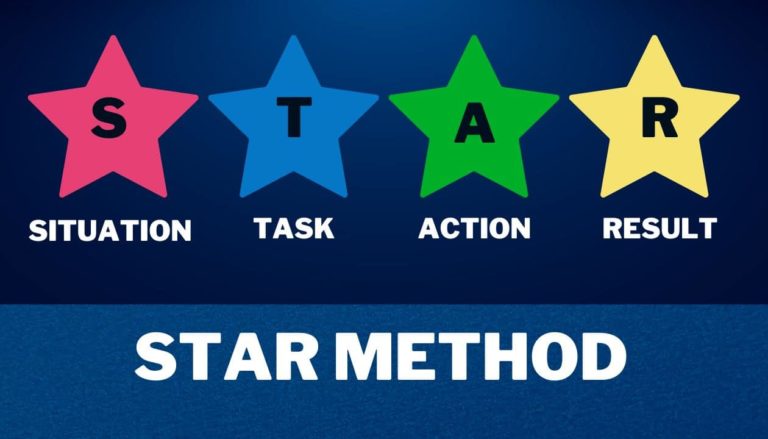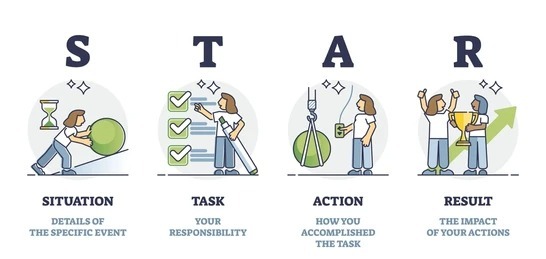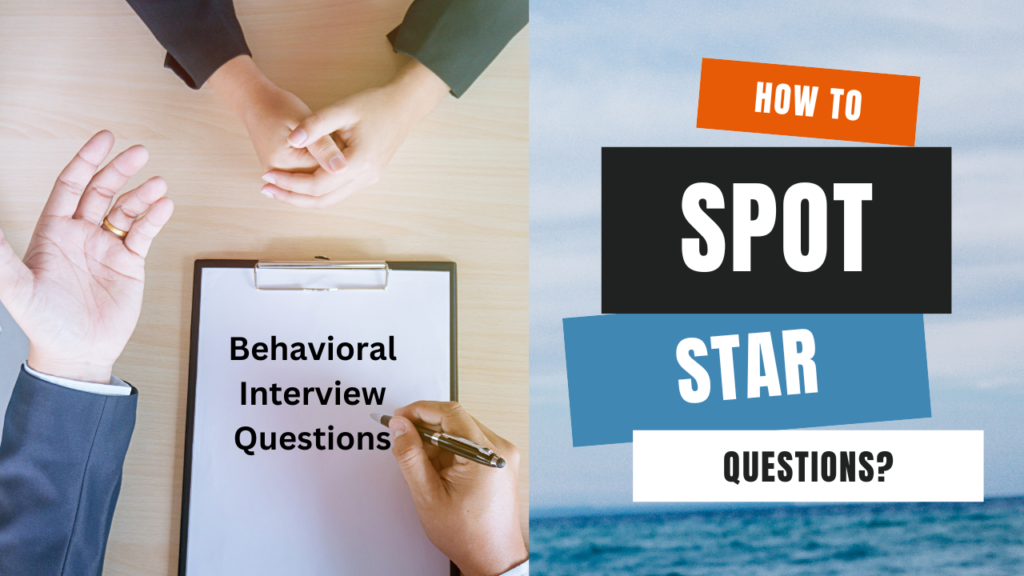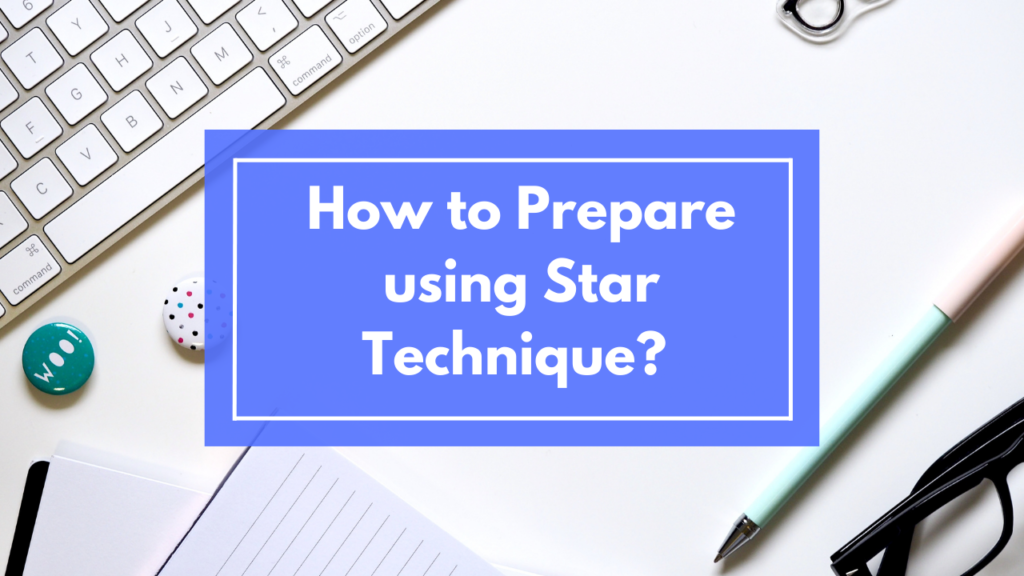
Hey Job Seekers! Often times we find ourself stuck in a constant loop of not being able to pass any interviews. Even though our resume shows our greatest achievements, but it becomes hard for a lot of us to get through the interview rounds. Ever wondered, why this happens? Let us tell you the biggest reason behind this. LACK OF TECHNIQUE! Yes, maybe you were not using the correct technique all this while. This us why we are introducing you today with the Star Interview Technique. This technique works wonders when it comes to answering questions in interview. So what are you waiting for? Go through the post and become an expert of slaying in interviews.
Hitachi Hiring for Customer Support Specialist
Contents
What is Star Method?
The Star Interview Technique is an organized way that gives you a straightforward format to answer interview questions that focus on your past experiences. It helps you share your story by breaking it down into four parts: the situation you faced, the task you needed to complete, the actions you took, and the results you achieved. By using the Star Interview Technique, you can effectively communicate your skills and accomplishments in a relatable and easy-to-understand manner, making a lasting impression on your interviewer.

S. T. A . R.
S – Situation: Under this you need to spill the specific details of the situation you were put or you were facing. You need to let the interviewer know sufficient about the specific event to give him/her a broader understanding.
T – Task: Under this, you need to let the other person know about main ultimate task that you were supposed to tackle or achieve.
A – Action: Now comes the “you” part. Under this, you will be describing the ways and approach you brought in, in order to survive the situation and achieve your aim. Throw more light on the actions and work done by you and how it helped in escalating the things towards the aim.
R – Result: This is the final part. Here you basically discuss about the outcome of all your actions. Tell the interviewer how you successfully landed the task towards it targeted goals. You need to put in all the positive aspects of the result while you are answering.
When to use Star Interview Technique in an interview?

Now the main question is, when are you exactly supposed to use this method while giving the interview?
Basically, this method is mostly used to answer behavioral kind of interview questions. These questions usually start with statements like:
- Describe about the time..
- What would be your take on..
- How did you handle when..
Such questions usually demand and focus on the fact what behavior you would be showcasing in different situations prevalent in the work life of an employee.
How do you prepare to use the STAR method ahead of your interview?

You can take several steps for preparing yourself according to the STAR Interview Technique. Some of are mentioned right here:
- Be fully aware of the details of the most recent tasks you were a part of. This will help you to form a well-structured answer with sufficient details and description.
- Make sure that your story sounds complete. Trying to cut the negative parts out might effect adversely sometimes. Don’t try to mould the story according to your own will. Place the facts in front of the interviewer.
- Last but not the least, you should also ensure that when its time for you to come on the ‘result’ part of the story. Not only does it tells about the good work of the team, but focuses on your individual input and efforts as well.
10 Sample Question using STAR method in an interview with their answers

1.Question: Can you describe a time when you had to deal with a difficult client
Answer: -: In my previous role as a marketing manager, I encountered a client who was unhappy with the progress of their marketing campaign.
- Task: My goal was to address their concerns and ensure their satisfaction with our services.
- Action: I scheduled a meeting with the client to discuss their concerns, reviewed the campaign data, and proposed adjustments to improve performance.
- Result: The client appreciated my proactive approach, and the revised campaign led to a 20% increase in their sales.
2.Question: Tell me about a time when you had to meet a tight deadline.
Answer:
- Situation: Our team was tasked with launching a new product within a month.
- Task: I needed to develop and execute a marketing campaign within this tight timeframe.
- Action: I prioritized tasks, delegated responsibilities to team members, and closely monitored progress to ensure timely completion.
- Result: We successfully launched the campaign on time, resulting in a 15% increase in sales during the first month.
3. Question: Describe a situation where you had to resolve a conflict within your team.
Answer:
- Situation: Two team members disagreed on the direction of a marketing campaign, causing tension and delays.
- Task: My responsibility was to resolve the conflict and ensure the project’s timely completion.
- Action: I facilitated a meeting between the team members, encouraged open communication, and helped them find a compromise.
- Result: The team members resolved their differences, and the project was completed on time and within budget.
4. Question: Tell me about a time when you had to adapt to a significant change at work.
Answer:
- Situation: Our company underwent a major reorganization, which led to changes in our marketing department’s structure.
- Task: I needed to adapt to the new structure and maintain the team’s productivity.
- Action: I communicated the changes to my team, provided support, and adjusted our workflow to align with the new structure.
- Result: The team adapted quickly, and our marketing campaigns continued to perform well during the transition.
5.Question: Describe a time when you had to learn a new skill to complete a project.
Answer:
- Situation: Our company decided to implement a new marketing automation tool.
- Task: I needed to learn the tool quickly to manage our email marketing campaigns effectively.
- Action: I attended training sessions, practiced using the tool, and sought guidance from colleagues who were already proficient.
- Result: I became proficient in the new tool, which led to a 25% increase in our email marketing campaign’s open rates.
6. Question: Can you share an example of when you had to make a difficult decision?
Answer:
- Situation: Our marketing budget was reduced, and I had to decide which campaigns to prioritize.
- Task: My goal was to allocate resources effectively while minimizing the impact on our overall marketing performance.
- Action: I analyzed campaign data, identified the highest-performing campaigns, and allocated resources accordingly.
- Result: Despite the budget reduction, our marketing performance remained strong, and we achieved our quarterly sales targets.
7. Question: Tell me about a time when you had to collaborate with a cross-functional team.
Answer:
- Situation: We were launching a new product that required collaboration between the marketing, sales, and product development teams.
- Task: My responsibility was to ensure effective communication and coordination between the teams.
- Action: I organized regular meetings, shared updates, and facilitated discussions to address any challenges or concerns.
- Result: The cross-functional collaboration led to a successful product launch, with sales exceeding initial projections by 10%.
8. Question: Describe a time when you had to present a marketing strategy to senior management.
Answer:
Answer:
- Situation: I developed a new marketing strategy to target a previously untapped market segment.
- Task: I needed to present the strategy to senior management and gain their approval.
- Action: I prepared a comprehensive presentation, highlighting the market research, proposed tactics, and expected results.
- Result: Senior management approved the strategy, and the campaign resulted in a 30% increase in sales within the new market segment.
9. Question: Tell me about a time when you had to analyze data to make a marketing decision.
- Situation: Our social media engagement rates were declining, and I needed to identify the cause.
- Task: My goal was to analyze the data and develop a plan to improve engagement.
- Action: I reviewed our social media analytics, identified trends, and adjusted our content strategy to better align with our audience’s preferences.
- Result: The changes led to a 20% increase in engagement rates and a more active online community.
10. Question: Can you share an example of when you had to think creatively to solve a problem?
Answer:
- Situation: Our marketing team faced challenges in reaching a younger demographic with traditional marketing methods.
- Task: I needed to develop a creative approach to engage this audience.
- Action: I proposed an influencer marketing campaign, partnering with popular social media personalities to promote our products.
- Result: The influencer campaign generated significant buzz among the target demographic, leading to a 35% increase in sales within that age group.